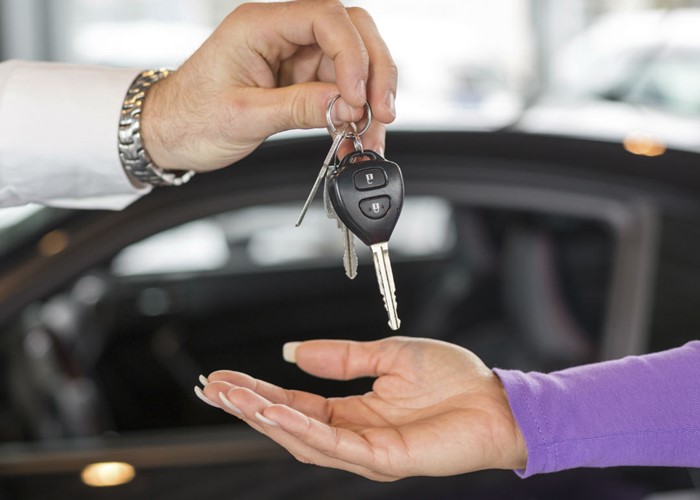This week, we’re finalizing our shop’s health insurance requirements for the next year. Our policy will be 25% more this year for the same coverage. Last year, it grew by 16%. Compounded, that’s 45% in two short years. No other cost increases on that scale for us.
As a small business, the spiraling costs of health care hit us particularly hard each year. And the need for a new approach to health care is particularly acute, for us and for our employees.
I’ve been puzzling over health care for a long while – and I won’t claim to have the answers here. But I thought it could be helpful to step away from the town hall and cable channel histrionics and fear-mongering to share some observations on health care from a small business perspective.
Insurance companies are like casinos: The house always wins.
Insurance companies have received a lot of criticism during the
health care reform debate. But they are doing precisely what they are
designed to do. They make money for investors by taking bets on the
health requirements of their customers.
Insurance companies operate like casinos or racetracks: the table is
always tilted in favor of the house. They may lose big on a single
‘jackpot’, but across the full array of customers they nearly always win. And when they don’t win ‘enough’, they’ll raise the cost of making bets with them.
When we enter into agreements with insurance companies, we’re always taking a sucker’s bet that we’re very likely to lose. The only reason an insurance company takes our money is because they ‘bet’ that we won’t need that amount of medical care.
Ultimately, as with the casino, the house wins.
The oddity of employer-provided health insurance.
We don’t really question it much today, but it is just plain strange that something as personal and as private as health care is mediated by employers at all. We don’t usually involve our employers in house payments or banking or appliance purchases or car insurance. But, somehow, we’ve come to expect them to provide health care insurance.
Employer-provided insurance is an historical artifact from negotiations between General Motors and labor unions in the late 1940’s and early 1950’s. Charles Wilson, GM’s CEO, saw it as a last-ditch concession to help prevent the ‘nationalized healthcare’ system that Harry Truman was championing – which Wilson saw as a threat to the integrity of the free enterprise system. (Funny how many things just don’t change.) Soon, other employers adopted health care coverage as a standard part of their benefits packages, and employer-provided insurance became the norm.
But, really, why are we employers involved at all?
Leverage
One reason that employers remain involved is that they often have more buying power than individuals. Over the past 60 years, we’ve been able to provide leverage which lets us negotiate somewhat better plans with insurers and medical providers.
But small businesses have scant more negotiating leverage than an individual. Often, our employees choose to get independent coverage rather than participate in our group plan.
When Lowell’s bid out to three other health insurance companies, the results were disheartening. The other three companies offered rates that were 200% to 300% higher than our current rates with Anthem. So we’re ‘trapped’ with Anthem.
Expanding waistlines, increasing costs.
As a nation, we’re getting a lot unhealthier. We eat more. We exercise less. We sleep less. We’re in worse health. We’re living longer. And we need more care.
We don’t spend much time, effort, or money on the preventative health care and self-care which would help eliminate the much more expensive catastrophic care. We’re too busy to exercise. We don’t want to pay for the mammogram. We don’t like waiting in the doctor’s office.
And we require more medical care as a result. Often, we get that
care after a catastrophe built upon years of self-abuse: We have a heart
attack. Our knees fail. The cancer spreads. (We see the same phenomenon with routine maintenance in the car business – put it off, put it off, put it off, then replace an engine.)
Health care is getting more expensive, in part, because we are getting unhealthier.
Rising expectations, increasing costs.
We’ve
come to expect more from our medical system. We expect our doctors,
staff, drugs, equipment, and facilities all to improve. And we should expect improvement as medical science advances.
But
those advances are costly. The astronomical research and development
costs for the medical ‘miracles’ of MRIs and cholesterol-fighting drugs
and ‘little blue pills’ have to be paid for in some fashion.
And doctors, hospitals, and insurance companies won’t simply absorb those costs. They will pass them on to patients.
Health care is getting more expensive, in part, because health care is getting better.
There are no painless solutions.
We’ve seen politicians, lobbyists, pundits, and fellow citizens all offer various versions of ‘painless’ solutions to the healthcare problem.
They promise that government should bear more of the burden. Or that government shouldn’t bear any of the burden. Or that we just need full, universal insurance. Or that insurance companies should pay. Or drug companies. Or hospitals. Or doctors. Or that we shouldn’t have to pay for the chronically uninsured. Or that we should just collar all the lawyers and their malpractice suits. Or we should just have more competition.
Nobody says that we must bear the responsibility. But we must.
If we refuse to provide insurance or government coverage for the roughly 45 million uninsured Americans, what happens to those who can’t pay? Hospitals and emergency rooms will still provide care. Their costs will go up. And they will pass those costs to other patients in the form of, say, an $8 dose of ibuprofen. We pay.
If we provide government-paid health care to them (or to ourselves), what happens? Our national deficit will rise. This week’s projection of a $9 trillion deficit over 10 years amounts to about $30,000 per man, woman, and child. Which will have to be funded through taxes. We pay.
If we have full universal coverage in a government program, what happens? Because they don’t bear the initial brunt of the costs, patients get more health care than they really need. And doctors and medical institutions will happily provide (or suggest) that profitable care. More deficit. More taxes. We pay.
If we squeeze insurance company profit (or put greater requirements on them), what happens? They will likely refuse coverage for the riskiest, least profitable customers. Unable to find private coverage, those customers will opt to go without coverage or to go with a public plan. More $8 (or, now, $10) ibuprofen. More taxes. We pay.
If we squeeze drug or equipment company profits, what happens? They have less to invest in research and development. They take fewer risks, and release fewer blockbuster drugs or fewer equipment breakthroughs. Improvements in our medical care falter. We pay.
If we collar lawyers and malpractice suits, what happens? Doctors’ malpractice insurance costs will likely go down. But a few careless doctors who commit malpractice may inflict injury or death without significant penalty. And who ultimately bears the cost of that irresponsibility and that injury or death? We do. We pay.
If we allow more competition between insurance companies, what happens? The insurance companies look at the same basic actuarial tables. They evaluate risks in the same way. They put a price on the ‘bets’ they are willing to take in the same way. And their prices remain about the same as without as much competition. We pay.
We want ever-better medical care. We are getting unhealthier. We want someone else to pay for it. But they won’t. We must bear the responsibility. We must pay.
Can government, insurance companies, hospitals, and doctors get more efficient? Sure. Are there opportunities to eliminate waste? You bet. Can we patients get healthier and do more preventative care? Absolutely. But it will cost us in some way.
There are no painless solutions. In the end, we all pay.
The moral obligation
“Is health care a right or a privilege?”
It is a question that we don’t talk about enough, and which underlies much of the national divide about health care today. Is health care a right to which all people are entitled? Or, is it a privilege bestowed only upon those who have earned it?
It is an interesting question, and the health care debate has hinged upon how people answer it.
Except that I think that it is the wrong question.
The “right or privilege” question presupposes that rights and privileges are somehow separable. I don’t think that they are.
I think of health care in many of the same ways as I think of citizenship or, even, to being a human being. As citizens and as humans, we have certain ‘inalienable’ rights. Heck, our country was built upon them – “Life, liberty, and the pursuit of happiness”.
But those citizen’s (and human) rights come with deep responsibilities. We must participate. We must act in certain ways. We must work together to improve our nation and our well-being. We can’t abuse the fundamental rights we have been given.
For me, health care comes down to a moral issue. I can’t tolerate 45 million fellow citizens living without a safety net. I can’t tolerate wasteful spending on needless tests and procedures on the public dime. I can’t tolerate 45% increases in insurance costs over 2 years. I can’t tolerate ‘competition’ which triples my existing rates. I can’t tolerate people (including me, unfortunately) who don’t take good enough care of themselves.
I can’t tolerate the status quo. Can you?
For me, health care is a citizen’s right. And an earned privilege. We must strive to provide health care for fundamental human needs whenever possible, while simultaneously striving to ensure we grapple with the responsibilities that come along with that privilege.
So to the politicians, lobbyists, pundits, and citizens engaged in the public debate, I say: Grow up. Step up to the plate. Quit attacking. Get realistic. Have adult discussions. Lose the scare tactics. Work together. Compromise. Take responsibility. Live up to your moral obligations.
Then, maybe, just maybe, we can build a better health care system. For our nation. And for one another.







 We know that getting your car serviced isn’t always convenient – you’ve got plenty to do, and waiting for a repair or arranging a ride can be a hassle.
We know that getting your car serviced isn’t always convenient – you’ve got plenty to do, and waiting for a repair or arranging a ride can be a hassle.